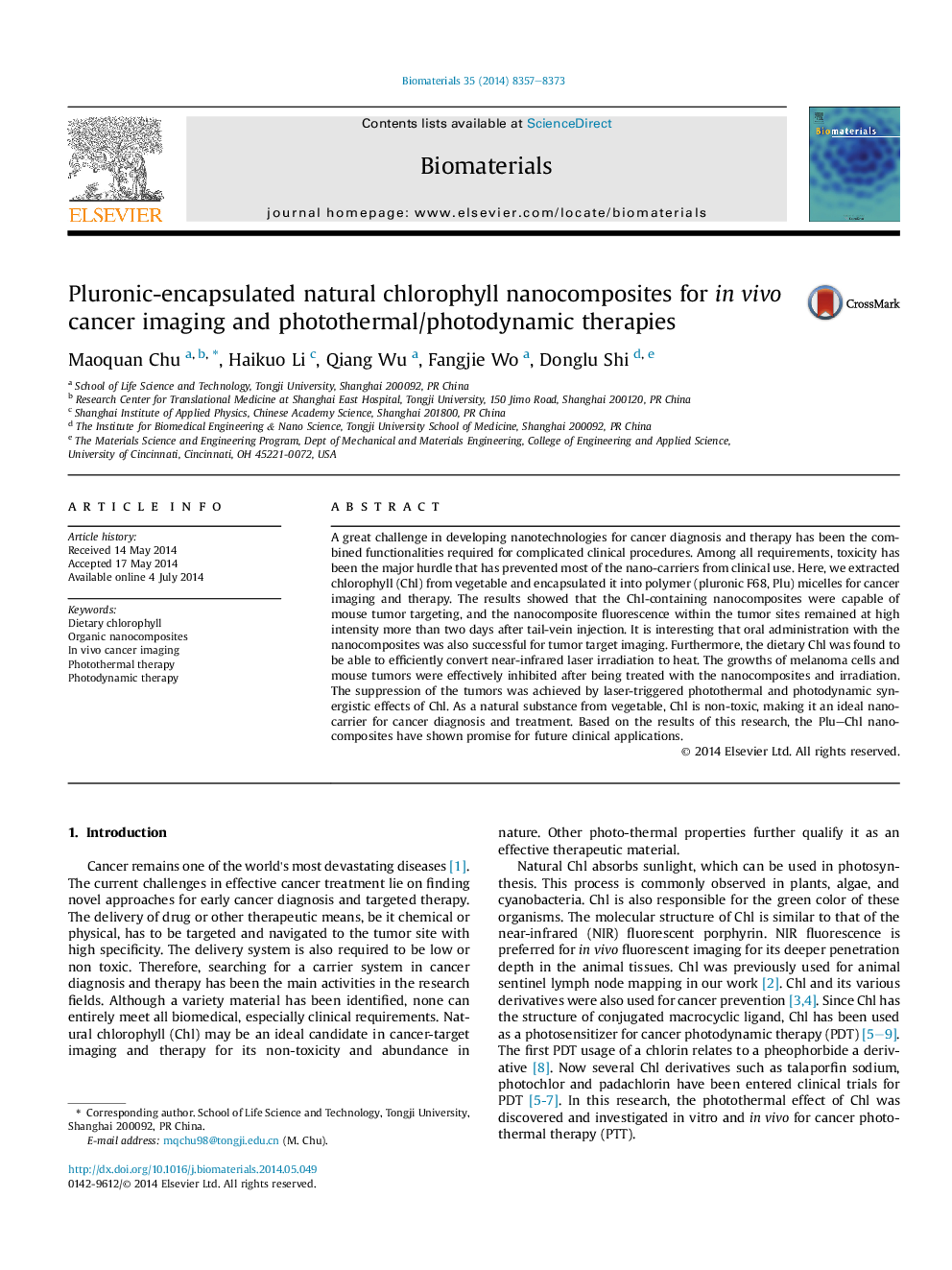| Article ID | Journal | Published Year | Pages | File Type |
|---|---|---|---|---|
| 10227297 | Biomaterials | 2014 | 17 Pages |
Abstract
A great challenge in developing nanotechnologies for cancer diagnosis and therapy has been the combined functionalities required for complicated clinical procedures. Among all requirements, toxicity has been the major hurdle that has prevented most of the nano-carriers from clinical use. Here, we extracted chlorophyll (Chl) from vegetable and encapsulated it into polymer (pluronic F68, Plu) micelles for cancer imaging and therapy. The results showed that the Chl-containing nanocomposites were capable of mouse tumor targeting, and the nanocomposite fluorescence within the tumor sites remained at high intensity more than two days after tail-vein injection. It is interesting that oral administration with the nanocomposites was also successful for tumor target imaging. Furthermore, the dietary Chl was found to be able to efficiently convert near-infrared laser irradiation to heat. The growths of melanoma cells and mouse tumors were effectively inhibited after being treated with the nanocomposites and irradiation. The suppression of the tumors was achieved by laser-triggered photothermal and photodynamic synergistic effects of Chl. As a natural substance from vegetable, Chl is non-toxic, making it an ideal nano-carrier for cancer diagnosis and treatment. Based on the results of this research, the Plu-Chl nanocomposites have shown promise for future clinical applications.
Related Topics
Physical Sciences and Engineering
Chemical Engineering
Bioengineering
Authors
Maoquan Chu, Haikuo Li, Qiang Wu, Fangjie Wo, Donglu Shi,
